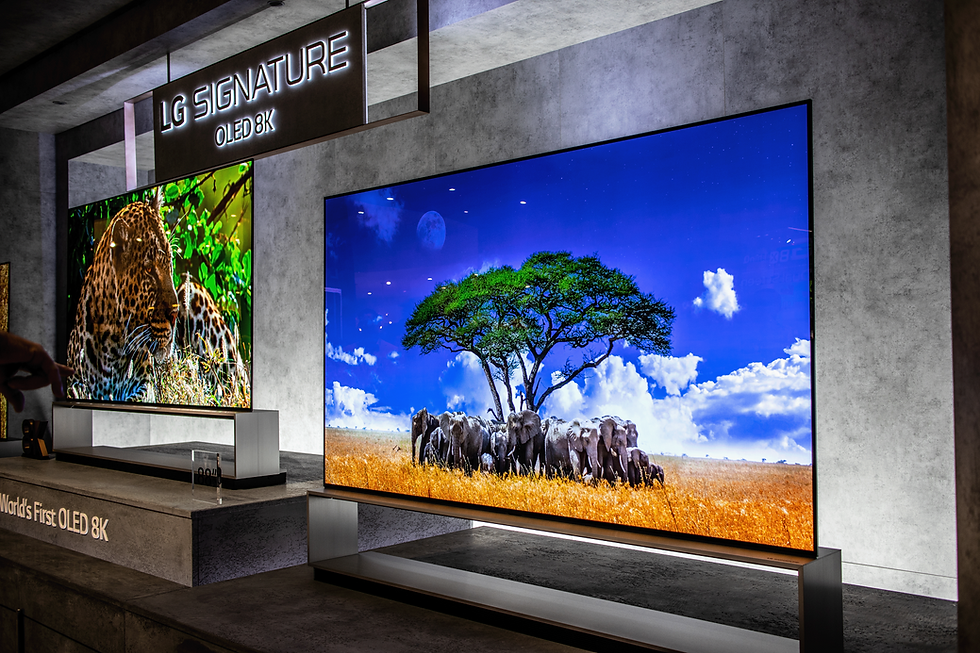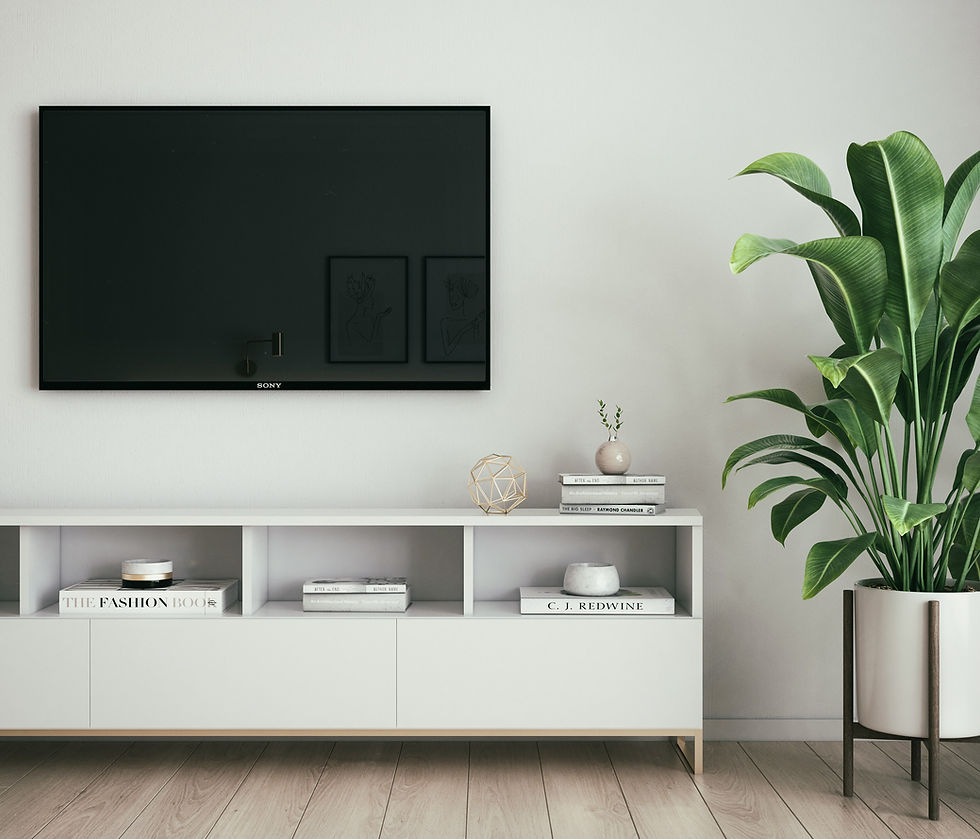The Pros and Cons of OLED vs LED TV Screens
- campbellkustommedi
- Jan 13, 2023
- 5 min read
When it comes to purchasing a new TV, one of the biggest decisions you'll have to make is whether to choose an OLED or LED screen. Both technologies have their own unique set of pros and cons, and it can be difficult to know which one is the best fit for your needs. In this blog post, we'll take a closer look at the differences between OLED and LED screens, and explore the pros and cons of each technology. We'll also discuss the key factors to consider when making your decision, so you can be confident that you're choosing the right TV for your home. Whether you're a movie buff, a gamer, or just looking for a TV that will give you the best picture quality, this post will help you understand the options available to you and make an informed decision.

The Importance of Screen Technology in TV Buying Decision
When it comes to buying a new TV, one of the most important decisions you'll need to make is what type of screen technology to choose. Different screen technologies offer different benefits and drawbacks in terms of picture quality, lifespan, energy efficiency, and price. It is important to understand these differences in order to make an informed decision that best fits your needs and budget. For example, OLED screens offer deep blacks and wide viewing angles, but they may have a shorter lifespan and a higher price tag compared to LED screens. On the other hand, LED screens offer brighter images and better energy efficiency, but they may not display true blacks as well as OLED screens and may have a backlight bleed problem. Therefore, understanding the screen technology is crucial in order to make a decision that will give you the best viewing experience and value for your money.
Overview of OLED and LED TV Screens
Two of the most popular options on the market are OLED and LED screens. OLED stands for Organic Light Emitting Diode, it's a newer technology that uses a thin layer of organic materials to produce light, this allows for the display of deep blacks and wide viewing angles. On the other hand, LED stands for Light Emitting Diode, it's a more established technology that uses a backlight to produce light which allows for a brighter image and better energy efficiency. Both technologies have their own set of advantages and disadvantages, and it can be tough to decide which one is the best fit for your needs. It is important to understand the difference between these technologies in order to make an informed decision that best fits your needs and budget.
Comparison of OLED and LED In Terms of Color Accuracy, Contrast, and Brightness
When comparing the capabilities and performance of OLED and LED TVs, it is important to consider the color accuracy, contrast, and brightness of each technology and the applications in which you will you utilize them.
Filmmakers and content creators spend many hours color grading, or manipulating footage to create consistent colors throughout the final project. Therefore, it is important that we, as television consumers, consider the effects color has on our viewing experience. OLED televisions are known for the ability to control each pixel allowing the ability to create true blacks however, that doesn’t necessarily mean they create the most accurate colors. LED televisions hold their own against their OLED counterparts in terms of color accuracy. While it does more depend on the technology used rather than the lighting methods, OLEDs cannot be considered better in the color accuracy department. Contrast, on the hand, is where OLED TVs outshine their LED equivalent.
. Remember, the individual pixel control that creates true blacks? That allows for the contrast in colors on an OLED screen to blow LED panels out of the water. OLEDs are the definitive winner in the category of contrast. The ability to turn individual pixels off allows for the darkest parts of the screen to be a completely dark area as opposed to a washed out light grey area that might occur in an LED panel.
OLED and LED are two popular technologies used in display screens, and they have their own unique features and benefits. When it comes to brightness, LED displays are known for their high brightness levels, making them ideal for use in well-lit environments such as outdoor billboards and sports stadiums. OLED displays, on the other hand, do not require a backlight, which allows for deeper blacks and a wider range of colors, making them better suited for viewing in darker environments such as home theaters. However, OLED displays are not as bright as LED displays, making them less suitable for use in bright environments.
Discussion of OLED's ability to display true blacks and its potential for better viewing angles
One of the most notable advantages of OLED technology is its ability to display true blacks. Unlike LED displays, which rely on a backlight to illuminate the screen, OLED displays use organic materials that emit light when an electric current is applied. This means that when a pixel is turned off, it produces no light, resulting in a true black color. This is especially beneficial for viewing in darker environments such as home theaters, as it allows for a more immersive viewing experience. Additionally, OLED displays offer a wider viewing angle than LED displays, as the pixels emit their own light, rather than relying on a backlight. This allows for a more consistent image quality no matter where the viewer is located in relation to the screen. These characteristics of OLED technology make it a popular choice for high-end TVs that require a high-quality display.
Comparison of OLED and LED in terms of lifespan and durability
When it comes to lifespan and durability, OLED and LED displays have some distinct differences. LED displays, which use a backlight to illuminate the screen, have a longer lifespan than OLED displays. This is because the backlight used in LED displays is typically a light-emitting diode (LED), which has a longer lifespan compared to the organic materials used in OLED displays. Additionally, LED displays are more durable as they are less susceptible to image retention and burn-in, which can occur when a static image is displayed for an extended period of time on an OLED display.
On the other hand, OLED displays offer some benefits when it comes to lifespan and durability. OLED displays do not require a backlight, which means that they have no backlight related issues. Additionally, OLED displays offer a wider viewing angle than LED displays, as the pixels emit their own light.
In Conclusion
In summary, OLED and LED displays both have their own advantages and disadvantages. OLED displays offer true blacks, wider viewing angles and no backlight related issues but have a shorter lifespan and not as durable as LED displays. On the other hand, LED displays have a longer lifespan and are more durable, but do not offer the same level of black reproduction and viewing angles as OLED displays. Ultimately, the choice between OLED and LED will depend on the specific application and the user's priorities.
Check out some of our affiliate links to great deals on Amazon for OLED and LED TVs.









Comments